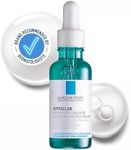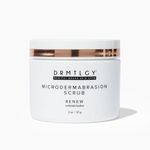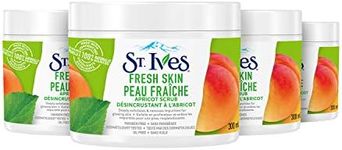Buying Guide for the Best Face Exfoliators
Choosing the right face exfoliator can make a big difference in your skincare routine. Exfoliators help remove dead skin cells, revealing smoother and brighter skin underneath. The best exfoliator for you depends on your skin type, sensitivity, and your skincare goals. It's important to understand the different types of exfoliators and their key features so you can pick one that fits your needs and keeps your skin healthy.Type of Exfoliator (Physical vs. Chemical)Face exfoliators come in two main types: physical and chemical. Physical exfoliators use small particles or tools to manually scrub away dead skin, while chemical exfoliators use gentle acids or enzymes to dissolve dead skin cells. Physical exfoliators can be more intense and are best for people who like a scrubby feel, but they may be too harsh for sensitive skin. Chemical exfoliators are often gentler and can be better for sensitive or acne-prone skin. To choose the right type, consider your skin's sensitivity and whether you prefer a scrub or a leave-on treatment.
Exfoliating IngredientsThe ingredients in an exfoliator determine how it works and how your skin will react. Common physical exfoliants include sugar, salt, or microbeads, while chemical exfoliants often use alpha hydroxy acids (AHAs) like glycolic or lactic acid, or beta hydroxy acids (BHAs) like salicylic acid. AHAs are good for dry or sun-damaged skin, while BHAs are better for oily or acne-prone skin. If you have sensitive skin, look for gentle ingredients like fruit enzymes. Always check the ingredient list to match the exfoliator to your skin type and concerns.
Granule Size and Texture (for Physical Exfoliators)The size and texture of the exfoliating particles in physical exfoliators can affect how gentle or abrasive the product feels. Fine, smooth particles are less likely to irritate the skin and are suitable for sensitive or delicate skin, while larger, rougher particles provide a deeper scrub but can cause microtears if used too aggressively. If you have sensitive or thin skin, opt for a product with fine, rounded granules. If your skin is thicker or less sensitive, you might prefer a coarser texture for a more intense exfoliation.
Frequency of UseHow often you can use an exfoliator depends on its strength and your skin's tolerance. Some exfoliators are designed for daily use, while others should only be used once or twice a week. Over-exfoliating can damage your skin barrier and cause irritation, so it's important to follow the recommended frequency. If you have sensitive or dry skin, start with less frequent use and see how your skin responds. If your skin is oily or used to exfoliation, you may be able to use it more often.
Added Skin BenefitsMany exfoliators include extra ingredients to provide additional benefits, such as moisturizers, soothing agents, or vitamins. For example, some may contain hyaluronic acid for hydration, aloe vera for calming, or vitamin C for brightening. These added benefits can help address specific skin concerns while you exfoliate. When choosing an exfoliator, think about what other skin goals you have, such as hydration or brightening, and look for products that offer those extra features.
Suitability for Skin TypeNot all exfoliators are suitable for every skin type. Some are formulated specifically for oily, dry, sensitive, or combination skin. Using the wrong type can lead to irritation or breakouts. If you have sensitive skin, look for gentle, fragrance-free options. For oily or acne-prone skin, choose exfoliators with ingredients that help control oil and prevent clogged pores. For dry skin, pick products with hydrating and soothing ingredients. Always match the exfoliator to your skin type for the best results.















